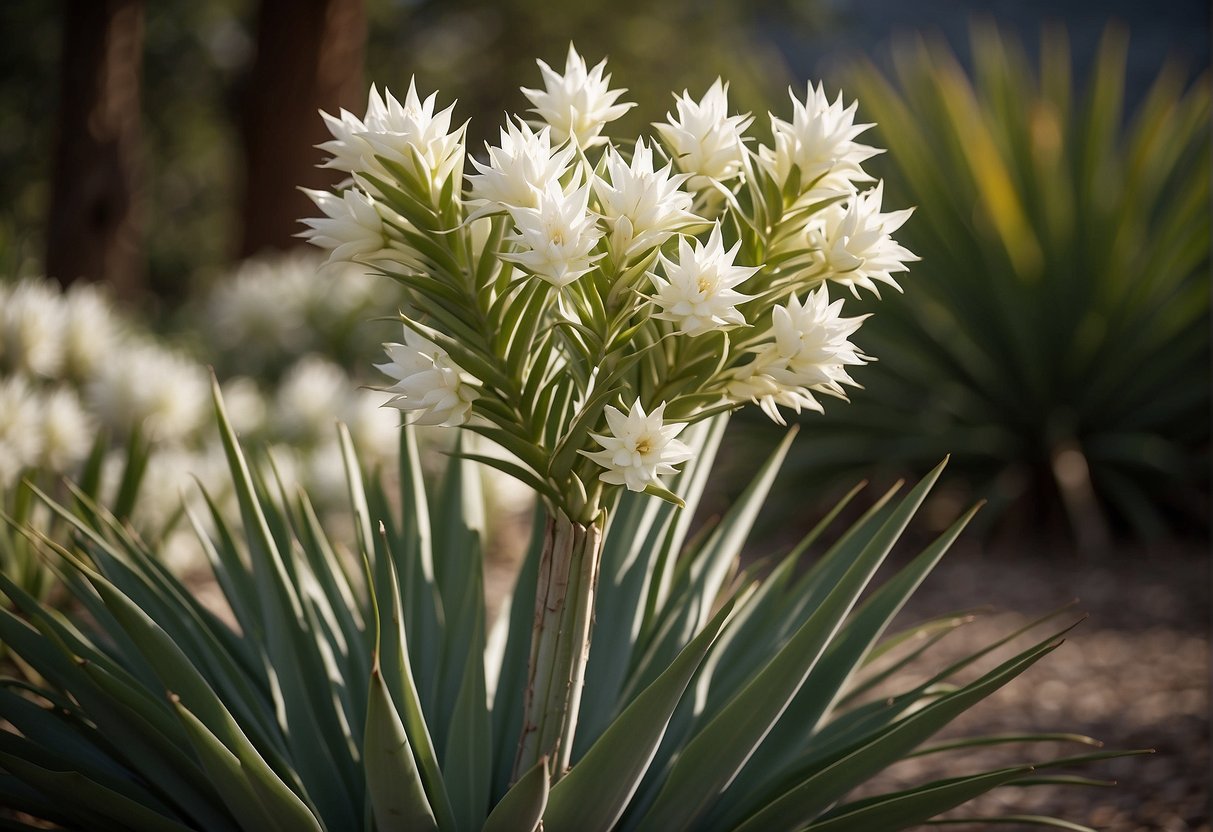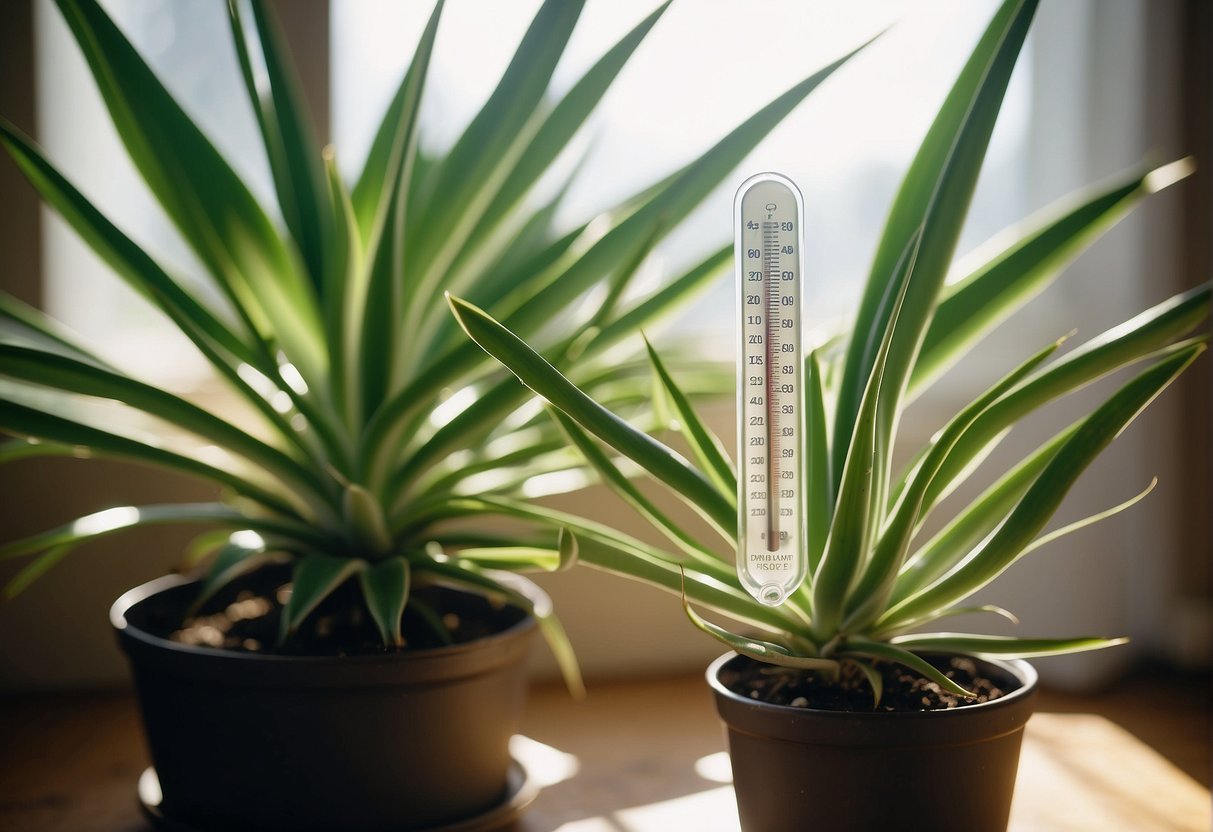What Temperatures Do Yucca Plants Need: A Guide to Optimal Growing Conditions
Yucca plants are favored by many gardeners as an easy-to-care-for, drought-tolerant option that is adaptable to various environments. However, to guarantee the best growth and health of your yucca plant, it’s crucial to know the ideal growth conditions and maintenance needs for this distinctive plant. A vital aspect to remember in the upkeep of yucca plants is understanding the temperature range they need to flourish and prosper.

Yucca plants are native to arid regions of North and Central America, where they have adapted to survive in hot, dry climates. As a result, these plants are well-suited to warm temperatures and can tolerate a wide range of temperatures, from as low as 30 degrees Fahrenheit to as high as 90 degrees Fahrenheit. However, while yucca plants can tolerate a range of temperatures, they do have specific preferences when it comes to their ideal growing conditions. In this article, we will explore the optimal temperature range for yucca plants and provide tips for ensuring that your plant stays healthy and happy.
Key Takeaways
- Yucca plants can tolerate a range of temperatures, from 30 to 90 degrees Fahrenheit.
- Yucca plants prefer warm temperatures and are well-suited to arid climates.
- To ensure that your yucca plant stays healthy, it is important to provide it with optimal growing conditions, including the right temperature range.
Optimal Growing Conditions for Yucca Plants

If you want to grow healthy Yucca plants, you need to provide them with the right growing conditions. Here are the three main factors you need to consider:
Temperature Requirements
Yucca plants are native to hot, arid climates, so they can tolerate high temperatures. However, they also need a period of dormancy during the winter months, so they can’t be exposed to freezing temperatures for extended periods. The optimal temperature range for Yucca plants is between 60°F and 80°F (15°C to 27°C). If you live in a colder climate, you can still grow Yucca plants indoors or in a greenhouse.
Sunlight and Exposure
Yucca plants need full sun exposure to thrive. They can tolerate some shade, but they won’t grow as well. If you’re growing Yucca plants indoors, make sure they’re placed near a south-facing window or under grow lights. If you’re growing them outdoors, make sure they’re not shaded by other plants or structures.
Soil and Drainage
Yucca plants need well-draining soil to prevent root rot. They prefer sandy or gravelly soil that’s low in organic matter. If you’re planting Yucca in a pot, make sure the potting soil is well-draining. You can mix sand or gravel into the potting soil to improve drainage. Yucca plants can also tolerate drought, so you don’t need to water them frequently. However, when you do water them, make sure the soil is thoroughly saturated.
Overall, Yucca plants are hardy and adaptable, and they can grow in a variety of climates and zones. By providing them with the right growing conditions, you can enjoy these beautiful and unique plants in your home or garden.
Yucca Plant Care and Maintenance

If you are planning to grow yucca plants, it is important to know how to take care of them properly. Yucca plants are relatively easy to maintain, but they require specific conditions to thrive. Here are some guidelines to help you with yucca plant care and maintenance.
Watering Guidelines
Yucca plants are drought-tolerant, which means that they do not require frequent watering. Overwatering can cause the roots to rot, so it is important to let the soil dry out between waterings. During the early spring, when the plant is actively growing, you can water it once a week. During the winter months, when the plant is dormant, you can reduce watering to once every two weeks.
Fertilizing and Nutrition
Yucca plants do not require frequent fertilization, but they do need some nutrients to grow properly. You can fertilize your yucca plant once a month during the growing season with a balanced fertilizer. Be careful not to over-fertilize, as this can cause the plant to become leggy and weak.
Pruning and Trimming
Yucca plants do not require frequent pruning, but you should remove any dead or damaged leaves as soon as you notice them. This will help the plant to focus its energy on healthy growth. You can also trim the plant to control its size and shape. Use clean, sharp pruning shears to avoid damaging the plant.
Overall, yucca plant care is relatively easy. With proper watering, fertilizing, and pruning, your yucca plant should thrive. If you notice any signs of overwatering or other problems, adjust your care accordingly. Repotting may also be necessary if the plant outgrows its container. With a little maintenance, your yucca plant will be a beautiful addition to your home or garden.
Propagation and Reproduction
Yucca plants can be propagated through both seed and vegetative methods. Each method has its own advantages and disadvantages, and the choice of method will depend on your goals and resources.
Seed Propagation
Propagating yucca plants from seed is a relatively easy and inexpensive method. However, it can take a long time for the plants to mature, and the resulting plants may not be identical to the parent plant.
To propagate yucca plants from seed, you will need to collect ripe seeds from the parent plant and plant them in a well-draining soil mix. Keep the soil moist and warm, and the seeds should germinate within a few weeks. Once the seedlings have grown to a suitable size, they can be transplanted to their permanent location.
Vegetative Propagation
Vegetative propagation involves taking cuttings or divisions from an existing plant and rooting them to create new plants. This method allows for the creation of identical plants to the parent plant, but can be more difficult and time-consuming than seed propagation.
Stem cuttings can be taken from the parent plant and rooted in a well-draining soil mix. Rhizomes can also be divided to create new plants. Pups, which are small plants that grow from the base of the parent plant, can also be removed and replanted.
No matter which method you choose, it is important to provide the right temperature and humidity conditions for the plants to thrive. Yucca plants prefer warm temperatures between 60-80°F (15-27°C) and low to moderate humidity. With the right care, your propagated yucca plants should grow to be healthy and beautiful additions to your garden.
Common Issues and Solutions
Pests and Diseases
Yucca plants are generally hardy and resistant to most pests and diseases. However, they can still be affected by mealybugs, scale insects, and fungal diseases. If you notice any of these pests, you should act quickly to prevent them from spreading.
To get rid of mealybugs and scale insects, you can use a cotton swab dipped in rubbing alcohol to wipe them off the plant. For fungal diseases, you can use a fungicide spray. Be sure to follow the instructions on the label carefully.
Environmental Stress Factors
Yucca plants require specific temperatures to thrive. If the temperature is too low, the leaves may turn yellow and fall off. If the temperature is too high, the plant may become stressed and stop growing. To ensure that your yucca plant is healthy, it is important to keep the temperature within the recommended range.
Another common problem is root rot, which can be caused by overwatering or poor drainage. To prevent root rot, make sure the soil is well-draining and only water the plant when the top inch of soil is dry to the touch.
In summary, keeping your yucca plant healthy is relatively simple as long as you are aware of the common issues that can arise. By taking proactive measures to prevent pests and diseases and ensuring that the plant is in the right temperature and soil conditions, you can enjoy a beautiful and thriving yucca plant for years to come.
Frequently Asked Questions
At what minimum temperature should yucca plants be kept during winter?
Yucca plants are native to desert regions, so they can tolerate cooler temperatures than other houseplants. However, during winter, they should be kept at a minimum temperature of 50°F (10°C). If temperatures drop below this, the plant may become dormant or even die.
How do indoor yucca plant temperature requirements differ from outdoor plants?
Indoor yucca plants should be kept in a warm, dry environment with plenty of sunlight. Outdoor yucca plants can tolerate a wider range of temperatures, but they still prefer a warm, sunny climate. Yucca plants can be grown outdoors in USDA hardiness zones 5-11.
What is the ideal temperature range for growing yucca plants indoors?
Yucca plants prefer temperatures between 60-80°F (15-27°C). They can tolerate temperatures outside of this range, but they may not grow as well. It’s important to keep the plant away from cold drafts or hot air vents, as this can cause temperature stress.
Can yucca plants survive frost and what precautions should be taken?
Yucca plants are not frost-tolerant and can be damaged or killed by freezing temperatures. If you live in a colder climate, it’s best to grow yucca plants in containers so they can be brought indoors during the winter. If the plant is exposed to frost, it may become discolored or wilted. In severe cases, the plant may die.
What are the signs of temperature stress in yucca plants?
If a yucca plant is exposed to temperatures outside of its preferred range, it may show signs of stress. This can include leaf drop, yellowing leaves, or stunted growth. The plant may also become more susceptible to pests and diseases. If you notice any of these symptoms, adjust the temperature and humidity levels to help the plant recover.
How should yucca plants be cared for during extreme temperature fluctuations?
Yucca plants can tolerate some temperature fluctuations, but extreme changes can cause stress. If you live in an area with extreme temperature changes, it’s best to keep the plant in a stable environment. This may mean moving it away from windows or doors that let in drafts, or using a humidifier or dehumidifier to maintain consistent humidity levels.


